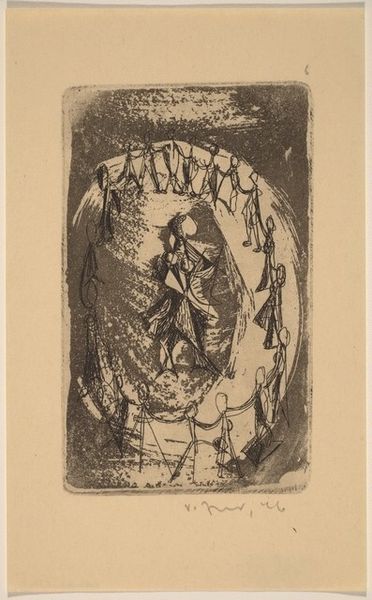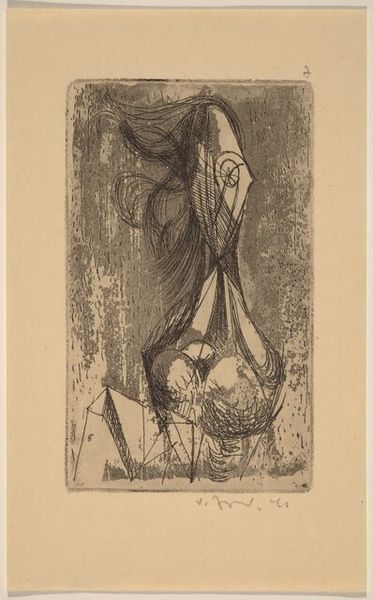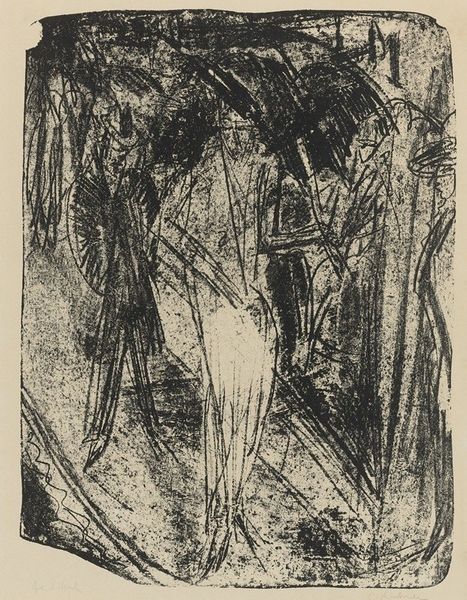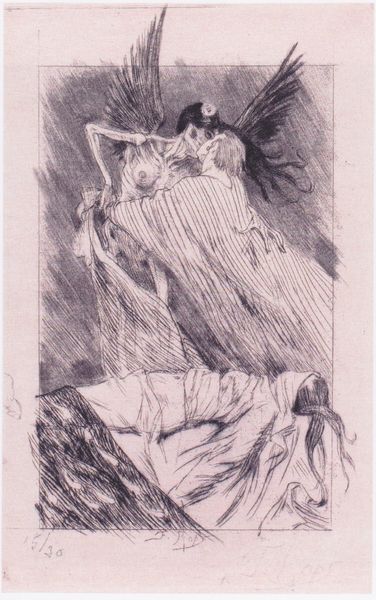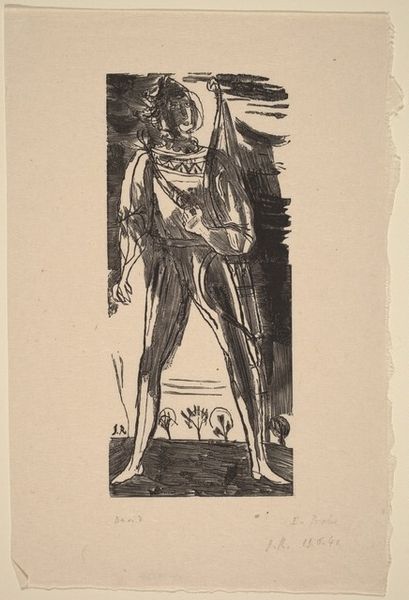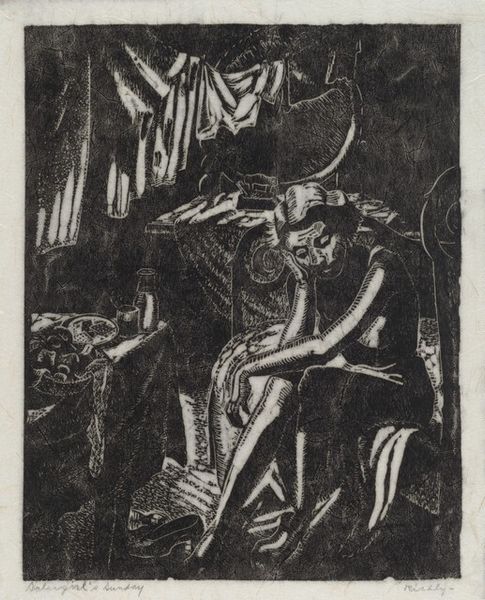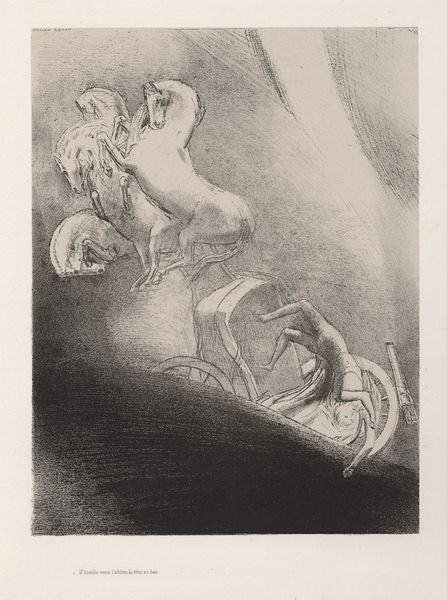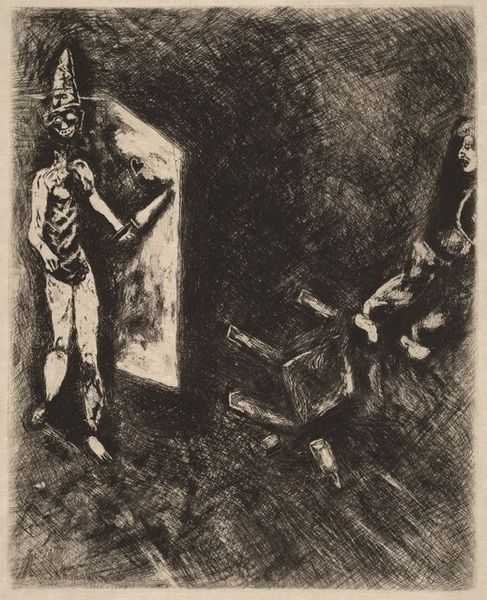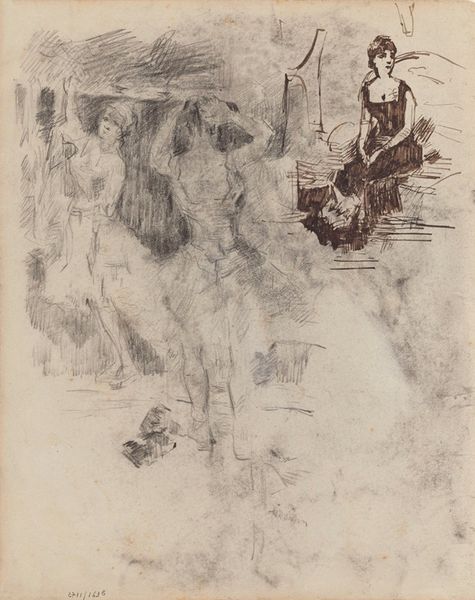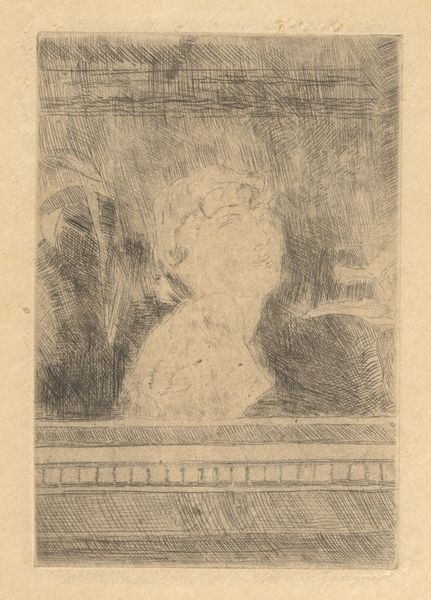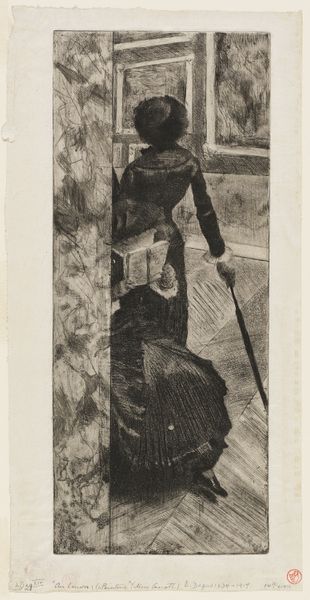
print, etching
#
narrative-art
# print
#
etching
#
figuration
#
abstraction
Dimensions: plate: 11.8 x 7.1 cm (4 5/8 x 2 13/16 in.) sheet: 16.8 x 10.2 cm (6 5/8 x 4 in.)
Copyright: National Gallery of Art: CC0 1.0
Curator: Vaclav Zykmund created "Spanelsko a Italie" – which translates to "Spain and Italy" – in 1946, and it’s rendered as an etching. It has an evocative, surreal feel. Editor: Evocative is one word for it. My immediate sense is…agitation. The chaotic line work, especially around the figures on the right, creates a real sense of unrest. What exactly are we looking at here, materially? Curator: Well, that agitation speaks to the socio-political climate of post-war Europe, doesn't it? As for the “what,” etching involves using acid to corrode a design into a metal plate, which then carries the ink for printing. The deep blacks and fine lines give the image both texture and clarity despite the abstraction. It's fascinating how process can influence perception. Editor: Absolutely. It’s also intriguing to think about what an artist can do to work *against* the process too. It doesn't seem Zykmund was interested in perfect smoothness, obviously. Look at how deliberately uneven the surface is. It feels like it’s critiquing this sense of the high-art preciousness, you know? Is he thinking of reproducibility? Curator: I agree, that is where the surreal elements are intensified. Note also that, with his limited means during that time, he chose a narrative, bridging Spain and Italy with abstracted figuration that could easily represent people trying to find their way in a broken, chaotic world. So, he did rely on a type of "high art." The figures become symbolic of a fragmented continent. The print medium could then allow this message to spread more broadly. Editor: True. But consider what “narrative” even meant then. Is this painting telling one singular story in an understandable manner? The narrative aspects work to create social commentary, and at the same time, there is abstraction in play as well, highlighting the production rather than illusion. Curator: You are correct. The effect for me comes across as raw and disquieting, capturing the anxieties of a generation. There is, after all, so much unresolved darkness present in its composition. Editor: Ultimately, Zykmund's etching achieves that unease through the thoughtful handling of his materials—challenging how we assign artistic or social value, don't you think?
Comments
No comments
Be the first to comment and join the conversation on the ultimate creative platform.
